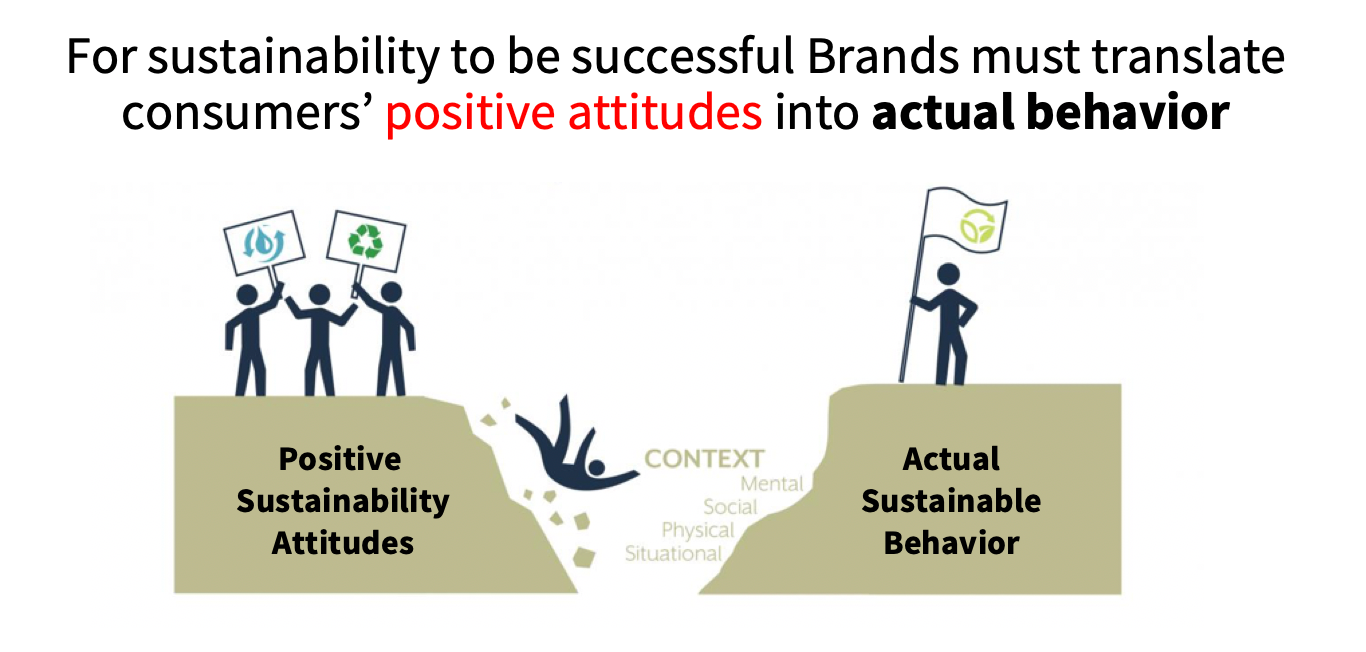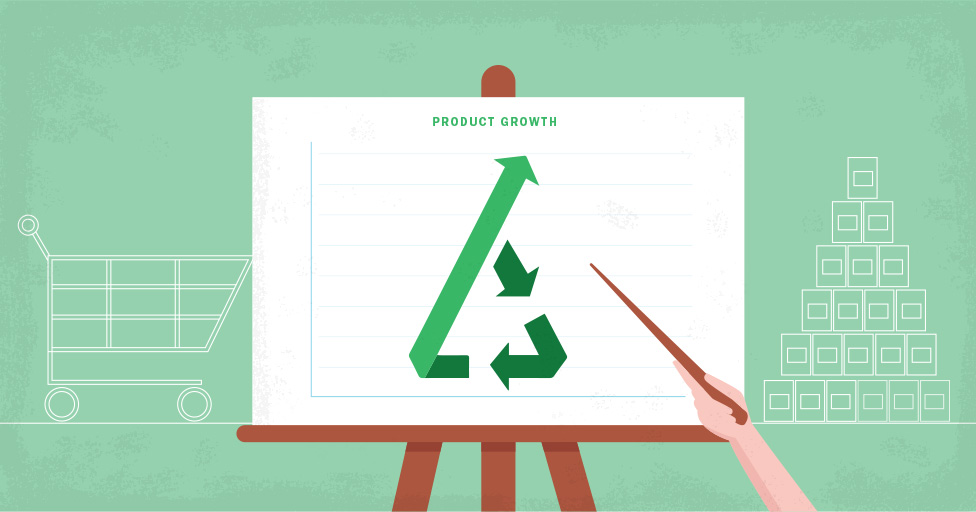At the core of the sustainability movement is doing good for the environment, but staying relevant to the greater good can come with significant brand benefits including capturing premium prices, swaying consumer choices your way, and increasing brand loyalty. Let’s unravel what sustainability means and how brands can benefit from it.
Sustainability is Not a Primary Buying Rationale (Yet)
There are few consumers whose choices are defined by only choosing sustainable brands. For the vast majority of consumers sustainable is a “nice to have”. If we ask consumers, “do you like brands that do good for the envionrment?” Most would agree with that statement, but few would change their current brand choices (and pay a premium price) for a sustainable brand. Most will choose their habitual brand or the best value. That is not to say consumers don’t value sustainable, rather sustainable is like a “tipping point” helping shift the attractiveness toward the brand amongst its non-sustainable counterparts.
At some point the world may change, but for now, brands looking to grow through massive reach and penetration should focus on using sustainable as a secondary driver.

Many Meanings of Sustainability
There is no one sized fits all with sustainability. Sustainability is like healthy, happy, natural — each with their own unique meaning. For example, sustainability for one consumer may be not buying plastic water bottles (buying Brita filtered water). For another consumer it could be using brands that use less plastic (Nestle uses 15% less plastic). For some consumers sustainability is not in reducing plastic but recycling plastic.
Also, sustainability also possesses different meanings for different product categories. For example, we may avoid soda in plastic bottles but believe it is ok to buy water in plastic bottles (justifying that water is good for me). Consumers may justify plastic water bottles but avoid using plastic straws, or plastic bags.
The point is consumers always find ways to rationalize how they are sustainable and our goal as brands are to understand what sustainability means for our customers and for our product categories.

- For sustainability to be a success, we should understand not just what it means for our brands, the environment and most importantly for consumers.
- Building ‘sustainable brands’ involves aligning interests of how consumer perceive sustainability and adjusting sustainability initiatives toward what is best for consumers, brand and environment.
Fully Integrated Sustainability Initatives

1. Vision & Strategy
Brands seriously looking to win with sustainability start with a crystal clear vision and actionable strategy. By making sustainability a core value of the company, that gets embraced at all levels of the organization, it gets actioned and authentically communicated in downstream activities.
- Showcase the vision, make it clear what you have done (where you are) what you working toward (Get consumers aligned and bought in).
- Create action goals that are simple and concrete (sustainable brand commitments) and show how they align toward a sustainable future.
- Make sustainable section easy to communicate and share. (Consumers will likely not read lengthy reports)

2. Internal Processes
Consumer may easily be sold by package claims, green labels and sustainable product features. But truly sustainable brands go deeper sourcing sustainable ingredients, reducing waste, leveraging sustainable manufacturing processes and doing what’s right beyond what the consumer can see. As consumer knowledge on sustainability grows (as it always does when brands source value from trends) they will see beyond marketing tactics for brands who truly embrace sustainability at the ground level with everything they do.
Sustainable long-run solutions starts with the daily efforts that often go unnoticed. Avoid being a sustainability blowup like VW and start building your sustainable efforts both internally and externally.
Examine all aspects of the operations strategy and aim for “green supply chain management” by identifying ways to become more sustainable and internally efficient. By re-examing internal processes through a sustainability lens, new opportunities can arise to have both a positive impact on the environment and economic performance.

3. Products.
Product sustainability can take many avenues. First brands should understand how consumers value sustainability within a specific category. This may require some market research to isolate motivations and competitive drivers for customers choosing a brand and product. For example, if we are the Kashi brand and want to further our sustainability efforts should we use more sustainable ingredients (which may change the taste?), Use more eco-friendly packaging? By understanding the breadth of sustainability options a brand has we can better serve customers and ultimate capture brand sustainability benefits.
Second, brands should analyze sustainability through a competition lens. Sustainability is often an angle for point of difference and rationale to be chosen especially when all the brands look no different from one another.
Try to understand where consumer value sustainability…
- Do they want more environmentally friendly products? packaging? both?
- Are consumers more concerned with sustainable for their image? their health? environment?
- Do consumers want to ‘feel’ involved in the sustainability process (recycling, donating, reusing, or just buying)?
- Will the sustainability efforts have unintended negative consequences (reduced quality, taste, efficacy, etc)?
- Do consumers want to be ‘seen’ as sustainable? Is there are social signaling aspect of sharing the sustainability purchase? Do they want to show others how they are doing good for the world?

4. Communications.
What separates a ‘sustainable’ product compared to every other brand on shelf? A brands ability to communicate sustainability. A brand can have the perfect mission, internal processes, and eco-friendly products but lack the right communications that speak to the consumers motives, interests and lose many potential buyers.
Consumer’s have a diverse range of motives for buying and paying premium prices for sustainability and it is a brand’s job to speak to those deep motivations. There are 2 broad ways to communicating your brand sustainability initiatives to ensure consumers get it.
- Sustainable Brand Narrative. The starting place for communications is the high level brand story. Consumers rarely care about environment facts, ambitious brand sustainability goals, but will remember a catchy narrative that folds the purpose into a larger global mission. Sustainable Brand narratives are highly relevant, memorable and convincing.
- Sustainable at Shelf. Brand stories are good long-term strategies but rarely help at shelf when consumers have hundreds of options. Being able to communicate sustainable at shelf (when consumers make quick decisions) is key to win. For some it may be as simple as a “eco-friendly” label or “responsible sourced ingredients” claim on label that gets the message across. However, for others, they may require distinctive assets or symbolic package cues that help communicate what consumers are buying into.






